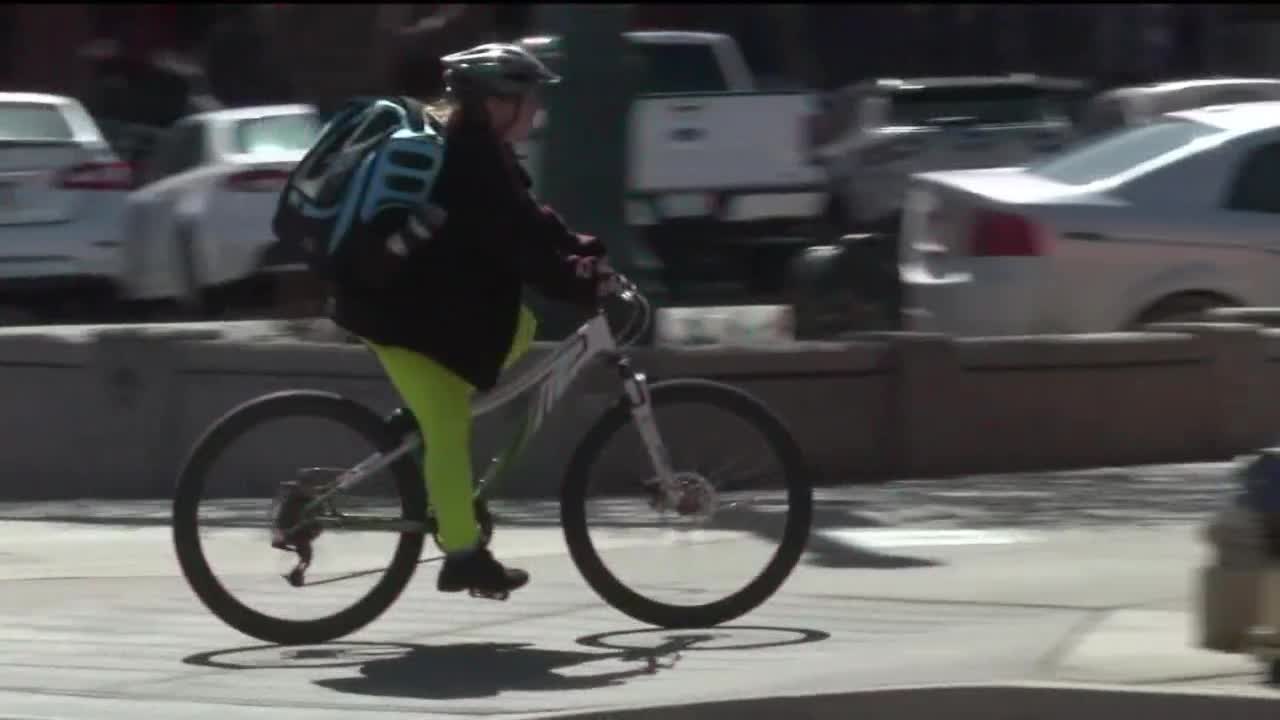“The Safety Stop" for bicyclists is now the law in Colorado. Governor Polis signed the bill into law yesterday, and at intersections, it allows cyclists to roll through stop signs and treat a red light as a stop sign. Bikers must also make sure the intersection is safe and clear to travel through too.
The biking community in Colorado Springs is on board with the new legislation, while local law enforcement have voiced their concerns
Before the law was signed, bicyclists followed the laws like driving a car
“Being at an intersection, sometimes there's not a full bike lane for the cyclists, so I have to kind of, you know, wedge right up against traffic, and I hope I’m out of the way. But there’s always a chance that someone could come behind me and hit me,” said Abraham Schubarth, a sales associate and bicycle mechanic at Colorado Springs Bike Shop.
Schubarth rides his bicycle to work most days out of the year. The new legislation now allows him and other bikers to treat stop signs as yield signs, and red lights can be treated as a stop sign.
“I feel a lot safer. I feel like I can get out of the way of traffic, and the flow of traffic can carry on. I don't have to worry about being in the way, and the motorists don't feel like I’m in the way,” said Schubarth.
However, not everyone is for the legislation.
In a committee hearing earlier this session, a CSPD Commander testified against the bill. Commander Jeff Strossner said the size of our community, the volume of traffic and the speed of vehicles makes this legislation bad policy for Colorado Springs.
He added that between July 2015 and June 2020, Colorado Springs had 338 bicycle crashes at intersections, and bicyclists were at fault for 43% of those crashes. Another concern with this bill, is that police say investigations would be harder to determine who is at fault in bicycle-related crashes.
But now, the legislation allows bicyclists to move quickly through intersections and reduce the amount of time spent there.
“The majority of accidents with bicycles occur at intersections and this keeps them out of the intersections and keeps them from waiting at intersections for lights to turn,” said Cathy Buckley, the director of campus safety and emergency management at Colorado College.
She added, that a lot of students, faculty and staff ride bicycles as a way of getting around campus.
“Here on campus we also have people on skateboards, we have people on electric scooters, we have people in wheelchairs, and this law, which covers ‘low speed-conveyance’ affects all of those categories of people in transport and transportation,” said Buckley.
Per the law, bicyclists have to make sure the intersection is clear, but there's also responsibility on a driver's part.
“We need to be very aware that this is a change to the behavior, and a change to the way that we interact with them. As the driving community, we have to be aware also that this is a change,” said Buckley.
Bikers in the biking community hope drivers are informed of the change, and it also serves as a reminder that everyone must share the road.
“I think it's going to really make things more efficient and more safe for everyone,” said Schubarth. “I hope the cars can see this as something that benefits both drivers and cyclists and that we're all working together on the road. We're all sharing the road.”
Manitou Springs adopted the “Safety Stop” law in late 2021.
Colorado Department of Transportation data shows 72% of crashes between bicyclists and cars were at intersections. Colorado is now the 9th state to implement a law allowing cyclists to treat stop signs as yield signs, and only the 4th state to allow red lights to be treated as stop signs.
Colorado College plans to educate students, faculty and staff about the changes in legislation.



